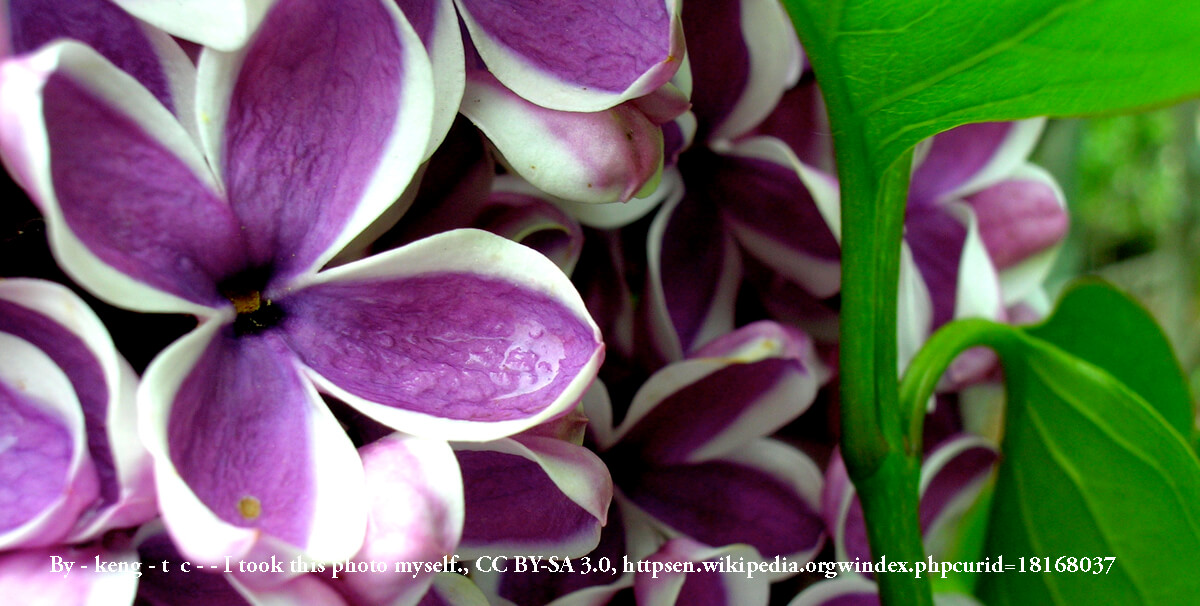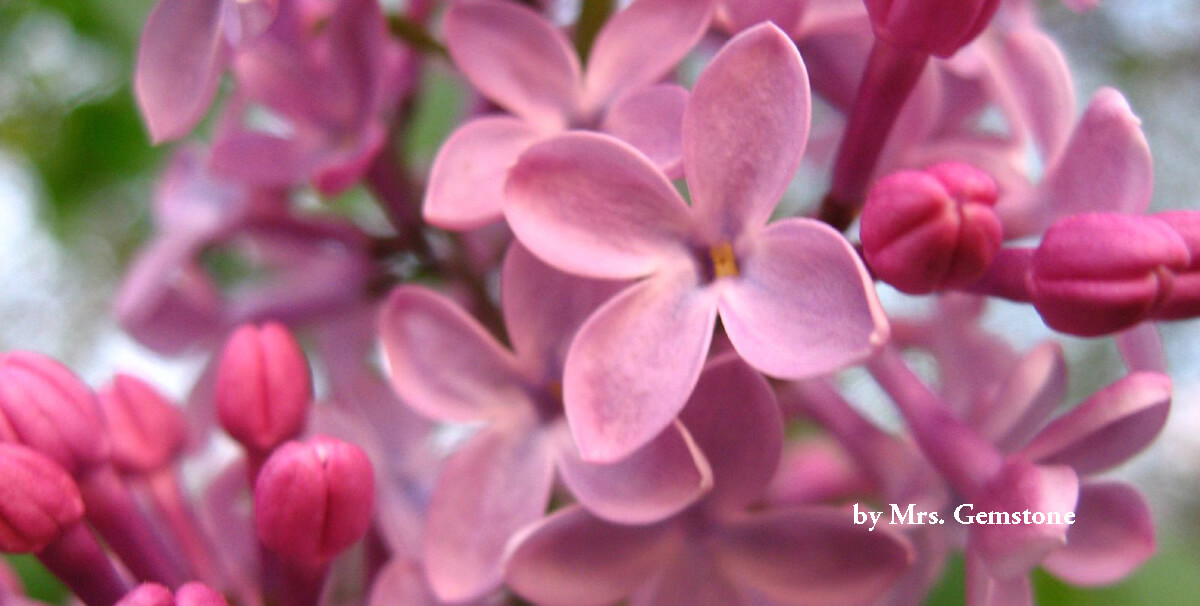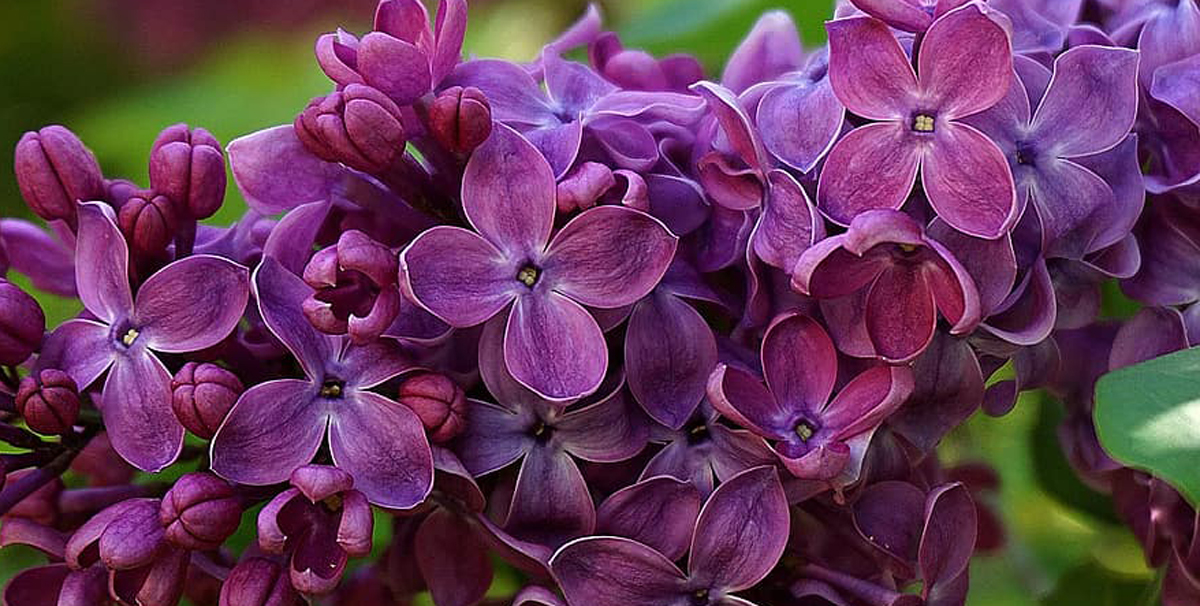 Daffodils may herald the coming of spring, but lilacs assure us that spring is here! The iconic lilac, once thought of as a throwback to grandma’s garden, is once again finding the place of honor it deserves in today’s gardens.
Daffodils may herald the coming of spring, but lilacs assure us that spring is here! The iconic lilac, once thought of as a throwback to grandma’s garden, is once again finding the place of honor it deserves in today’s gardens.

Lilacs have been a garden staple for nearly a thousand years. They graced the gardens of the Greeks and Romans. Celtics who grew them thought their fragrance magical -- literally --, and early Russians believed that newborns could gain wisdom from a sprig of lilac. To the Victorians, lilacs spoke of love -- sometimes a past love and sometimes a new love. Today, in the United States, lilacs symbolize confidence, steadfastness and renewal. Along with clematis, lilacs are a floral symbol for the 8th wedding anniversary.
 Give someone a bouquet of white lilacs and you are celebrating their purity and innocence. The gift of blue lilacs symbolizes tranquility and contentment, magenta blooms communicates your love and passion for the recipient, while a light purple lilac says "you are my first true love."
Give someone a bouquet of white lilacs and you are celebrating their purity and innocence. The gift of blue lilacs symbolizes tranquility and contentment, magenta blooms communicates your love and passion for the recipient, while a light purple lilac says "you are my first true love."
 Lilacs, relatives to olive trees, are believed to have originated in Asia and Eastern Europe. Since their introduction to the continent in the early half of the 1600s, the lilac has been extensively cultivated and hybridized. Today, there are over 30 known species and thousands of cultivars.
Lilacs, relatives to olive trees, are believed to have originated in Asia and Eastern Europe. Since their introduction to the continent in the early half of the 1600s, the lilac has been extensively cultivated and hybridized. Today, there are over 30 known species and thousands of cultivars.
 If you lived in the more northern or midwestern regions of the country, it's likely that the sweet-smelling purple lilac in your grandmother’s garden was the common lilac, or Syringa vulgaris. Like most lilac varieties, the common lilac needs a period of cold weather to survive. It is easily grown in organically rich to average soil that is well-drained; lilacs do not like wet feet. Vulgaris prefers full sun but can tolerate light shade, although it won’t bloom quite as heavily. To avoid powdery mildew in humid climates, make sure to plant vulgaris in areas where the air freely circulates. Newer cultivars are much more resistant to powdery mildew.
If you lived in the more northern or midwestern regions of the country, it's likely that the sweet-smelling purple lilac in your grandmother’s garden was the common lilac, or Syringa vulgaris. Like most lilac varieties, the common lilac needs a period of cold weather to survive. It is easily grown in organically rich to average soil that is well-drained; lilacs do not like wet feet. Vulgaris prefers full sun but can tolerate light shade, although it won’t bloom quite as heavily. To avoid powdery mildew in humid climates, make sure to plant vulgaris in areas where the air freely circulates. Newer cultivars are much more resistant to powdery mildew.
 Once established, the common lilac is a hardy plant that can live for years. It can reach a height of 12 to 16 feet at maturity with a spread of 8 to 12 feet, making it a great choice for a hedge or screen. Typically blooming for about three weeks in May, the common lilac is a favorite for both butterflies and hummingbirds. Blooms form on old wood, so any pruning for light shaping or to remove damaged branches needs to be done immediately after flowering ends. To keep mature bushes thriving, experts recommend removing about one-third of the oldest, thickest branches every few years. Syringa vulgaris is hardy in zones 3 to 7.
Once established, the common lilac is a hardy plant that can live for years. It can reach a height of 12 to 16 feet at maturity with a spread of 8 to 12 feet, making it a great choice for a hedge or screen. Typically blooming for about three weeks in May, the common lilac is a favorite for both butterflies and hummingbirds. Blooms form on old wood, so any pruning for light shaping or to remove damaged branches needs to be done immediately after flowering ends. To keep mature bushes thriving, experts recommend removing about one-third of the oldest, thickest branches every few years. Syringa vulgaris is hardy in zones 3 to 7.
Several cultivars recommended by area botanical gardens are:
.jpg)
Syringa vulgaris ‘Charles Joly’

Syringa vulgaris ‘Madame Lemoine’

Syringa vulgaris ‘Sensation’
Rather than using the common lilac, many designers today choose a Korean lilac, also known as the Meyer lilac, Syringa meyeri instead. As beloved as the common lilac is, this species has much to offer.
.jpg) The Korean lilac, which has never been found in the wild, was discovered in 1909 growing in a garden near Beijing, China by Frank Meyer (of Meyer lemon fame), a plant explorer employed by the USDA to find and collect new plant species. Thinking that the lilac was simply a non-hardy, grafted plant, it was dismissed from serious study until the 1920s when it was “rediscovered” and its potential realized. While straight species plants are not usually commercially available, the cultivars like ‘Palibin’ have become an industry standard.
The Korean lilac, which has never been found in the wild, was discovered in 1909 growing in a garden near Beijing, China by Frank Meyer (of Meyer lemon fame), a plant explorer employed by the USDA to find and collect new plant species. Thinking that the lilac was simply a non-hardy, grafted plant, it was dismissed from serious study until the 1920s when it was “rediscovered” and its potential realized. While straight species plants are not usually commercially available, the cultivars like ‘Palibin’ have become an industry standard.
 Syringa meyeri ‘Palibin’,or the Dwarf Korean Lilac, grows well in fertile, organically rich, well-drained soil, but also adapts to poor or compacted soils. It blooms profusely in the full sun, but can also thrive in a light shade environment. Less susceptible to powdery mildew than other lilacs, it still appreciates good air circulation. At maturity, this dwarf lilac stands only 4 to 6 feet tall, but has a spread of 5 to 7 feet, making it an ideal choice as either a specimen plant, in a shrub border or as part of a foundation planting. Its rounded shape fits well in informal, cottage garden settings.
Syringa meyeri ‘Palibin’,or the Dwarf Korean Lilac, grows well in fertile, organically rich, well-drained soil, but also adapts to poor or compacted soils. It blooms profusely in the full sun, but can also thrive in a light shade environment. Less susceptible to powdery mildew than other lilacs, it still appreciates good air circulation. At maturity, this dwarf lilac stands only 4 to 6 feet tall, but has a spread of 5 to 7 feet, making it an ideal choice as either a specimen plant, in a shrub border or as part of a foundation planting. Its rounded shape fits well in informal, cottage garden settings.
 Cultivars of Syringa meyeri are heavy bloomers, often holding their dense, intensely fragrant four inch blooms slightly longer than the typical three week time frame. The dark green foliage remains attractive throughout the hot summer months, and some cultivars have an attractive reddish-bronze fall color. Flower colors range from whitish pink to wine-red. Some of the Fairytale Series will occasionally rebloom throughout the summer. Attractive to butterflies and hummingbirds, deer tend to avoid Korean Lilacs. They are hardy in zones 3 - 7.
Cultivars of Syringa meyeri are heavy bloomers, often holding their dense, intensely fragrant four inch blooms slightly longer than the typical three week time frame. The dark green foliage remains attractive throughout the hot summer months, and some cultivars have an attractive reddish-bronze fall color. Flower colors range from whitish pink to wine-red. Some of the Fairytale Series will occasionally rebloom throughout the summer. Attractive to butterflies and hummingbirds, deer tend to avoid Korean Lilacs. They are hardy in zones 3 - 7.
Several cultivars recommended by area botanical gardens are:
 Syringa meyeri ‘Palibin’
Syringa meyeri ‘Palibin’
Syringa meyeri ‘Light Pink Flower’ (no image available)
Syringa meyeri ‘Sugar Plum Fairy' (no image available)
Syringa meyeri ‘Tinkerbelle’ (no image available)
 If you’re looking to add a touch of romance to your garden or just need to feel a tie to the past, then adding a lilac bush could be the answer. The experts at Embassy Landscape Group can help you find the perfect spot. Just give them a call; they are there to help.
If you’re looking to add a touch of romance to your garden or just need to feel a tie to the past, then adding a lilac bush could be the answer. The experts at Embassy Landscape Group can help you find the perfect spot. Just give them a call; they are there to help.



CR.jpg)
CR.jpg)
